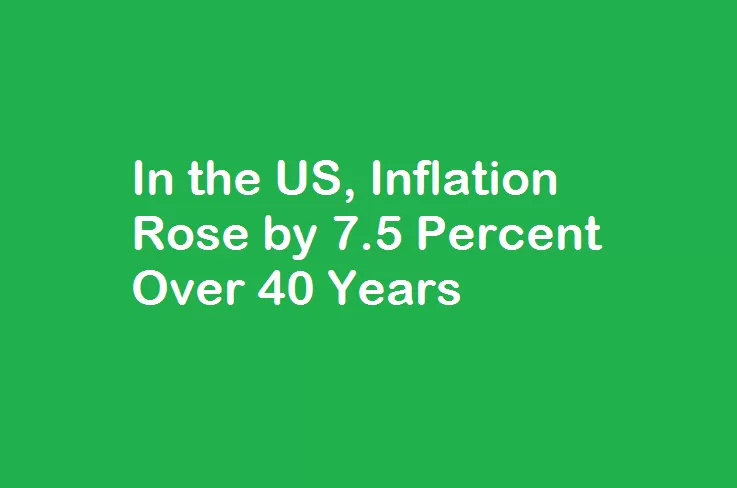Assuming you’re referring to the period between 1981 and 2021 when looking at the Consumer Price Index (CPI) for all items in the United States, inflation has risen by 131.4 percent during that period. This means that a basket of goods and services that cost $100 in 1981 would cost $231.40 in 2021 due to inflation. The average annual inflation rate during this period was approximately 2.65 percent. It’s worth noting that inflation can vary depending on the specific goods and services being measured, as well as other economic factors such as supply and demand, interest rates, and government policies.
Understanding why the US Inflation Rate rose
The US inflation rate has risen over the years due to a combination of factors, including:
- Increase in money supply: The Federal Reserve has increased the money supply in the economy by buying government bonds and other securities. This increase in the money supply can lead to more money chasing the same amount of goods and services, which can push prices up.
- Increase in demand: As the economy grows and people have more money to spend, demand for goods and services increases. This increase in demand can put upward pressure on prices.
- Supply chain disruptions: Disruptions in the supply chain caused by natural disasters, pandemics or other events can cause shortages or delays in the production or delivery of goods and services, leading to higher prices.
- Increase in production costs: When the cost of producing goods and services rises, producers may pass those costs on to consumers in the form of higher prices.
- Wage increases: When wages rise, businesses may raise prices to cover the increased labor costs.
- Government policies: Government policies, such as tariffs or taxes,
Assessing Government Policies That Impacted Inflation
Several government policies have impacted inflation in the United States over time. Some examples include:
- Monetary policy: The Federal Reserve plays a significant role in managing inflation through its monetary policy decisions, such as setting interest rates and controlling the money supply. By increasing interest rates or reducing the money supply, the Federal Reserve can help slow down inflation.
- Fiscal policy: The government’s fiscal policy decisions, such as taxation and government spending, can also impact inflation. For example, if the government increases spending without generating enough revenue, it may lead to inflation as there is more demand for goods and services with no corresponding increase in production.
- Trade policy: Government policies on trade, such as tariffs or quotas, can impact inflation by affecting the prices of imported goods and services. If the government imposes tariffs on imports, it can lead to higher prices for those goods, which can contribute to inflation.
- Wage policies: Government policies related to wages, such as minimum wage laws, can also impact inflation. When wages increase, businesses may raise prices to cover the increased labor costs, which can contribute to inflation.
rajkotupdates.news : us inflation jumped 7.5 in in 40 years
Addressing the Challenges of High Inflation
High inflation can pose several challenges to an economy, including:
- Reduced purchasing power: As the cost of goods and services rises, the purchasing power of individuals decreases, which can lead to lower standards of living and economic hardship.
- Uncertainty and instability: High inflation can create uncertainty and instability in the economy, making it difficult for businesses and consumers to plan for the future.
- Redistribution of wealth: Inflation can lead to a redistribution of wealth from savers to borrowers, as the value of money decreases over time. This can exacerbate existing inequalities in society.
- International competitiveness: High inflation can also make a country’s goods and services more expensive relative to those of other countries, reducing international competitiveness.
To address the challenges of high inflation, governments can take several measures such as:
- Tightening monetary policy: Central banks can raise interest rates or reduce the money supply to slow down inflation.
- Fiscal consolidation: Governments can reduce spending or increase taxes to reduce aggregate demand and control inflation.
- Supply-side policies: Policies that aim to increase the supply of goods and services, such as deregulation or investment in infrastructure, can help control inflation by increasing production and reducing prices.
- Wage and price controls: Governments can impose wage and price controls to limit the rise in prices. However, these policies can have unintended consequences, such as reduced production and shortages.
- International cooperation: Countries can work together to coordinate their macroeconomic policies and stabilize global inflation.
Read Also: rajkotupdates.news : pubg developer krafton has filed a lawsuit against garena free fire
